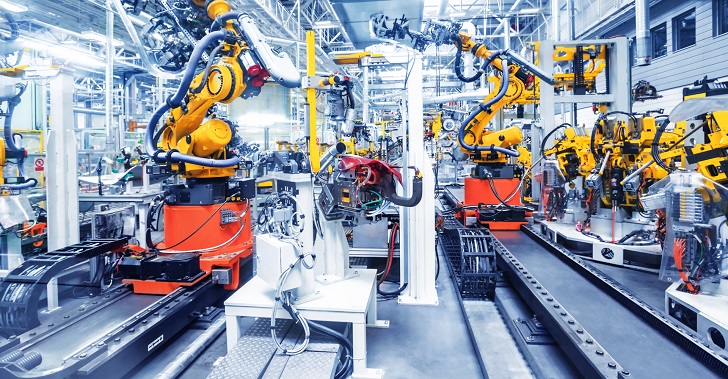
Why Robots Will Boost Human Employment

The looming specter of job-stealing robots has haunted the workforce for years. But what if this fear is mainly unfounded? In this article, we’ll delve into the fascinating world of automation and its surprising potential to preserve jobs and create new ones. Brace yourselves for a journey into the future of work.
Automation’s Promise
Contrary to the widespread belief that automation spells doom for human employment, experts argue that it will usher in an era of job growth. The World Economic Forum predicts a net increase of 58 million jobs thanks to automation. ARK Investment Management further suggests that automation will contribute an impressive five percent, equivalent to $1.2 trillion, to the U.S. GDP in the next five years.

Liliana Drew/ Pexels | The future of work is uncertain, but it holds the promise of innovation and progress
This isn’t mere speculation; history provides a compelling precedent. Take accountants, for instance. With the advent of spreadsheets and bookkeeping software, their roles evolved significantly. However, these tools propelled the field’s expansion instead of rendering them obsolete. In 1979, around 299,000 individuals worked as accountants, bookkeepers, or auditors.
Then, in 1983, Intuit introduced its financial software, followed by Microsoft Excel in 1985. Despite these technological leaps, the number of professionals in this field surged. By 1989, it had grown by a staggering 75 percent to 524,000, and it continues to grow, currently employing approximately 1.28 million people with an expected annual growth rate of about 4 percent through 2029.
ATMs and Bank Tellers
Perhaps the rise of ATMs offers an even more unexpected example. You’d think that automatic teller machines would spell the end for human bank tellers. However, the reality is quite the opposite. In 1970, when ATMs made their debut, there were around 250,000 bank tellers in the U.S. By 2019, despite the proliferation of ATMs to roughly 400,000, the number of bank tellers had doubled.

André Gonçalves/ iStock | Automation doesn’t eliminate jobs; it reshapes them into higher-skilled roles
How did this happen? Essentially, bank tellers and accountants started tackling more intricate tasks. Accountants shifted from number-crunching to nurturing client relationships and handling complex financial challenges.
Similarly, introducing ATMs reduced the number of tellers per branch, making opening new branches cheaper. Consequently, the number of bank branches increased by about 40 percent, leading to more bank teller positions. These modern bank tellers no longer serve as mere cashiers but as financial consultants, assisting customers with loans and investments.
Elevating Skills and Creating Opportunities
In both scenarios, the transformation brought about by automation elevated the skills required for these professions. While some jobs were indeed lost, more high-skilled positions emerged.
This is a key point: automation doesn’t just replace jobs; it reshapes them into higher-skilled roles, fostering job growth overall. Approximately two-thirds of jobs affected by automation are expected to become higher-skilled, while the remaining third may become lower-skilled.

Jowita Kessler/ Pexels | The advent of technology often elevates the skills required for professions
Preparing the Workforce for the Future
With such a seismic shift in job dynamics, preparing the workforce is imperative. Not only must we equip people for higher-skilled roles, but we also need to consider those who may find themselves in lower-skilled positions.
The anticipated job growth presents an opportunity to reintegrate those currently unemployed back into the workforce. While the scale of retraining might appear daunting, history shows that we’ve successfully adapted to radical changes.
In the early 1900s, as farming mechanization reduced agricultural employment, we transitioned workers into the industrial sector, mainly by introducing mandatory high school education in agricultural states. Today, we face a comparable challenge and must devise equally bold strategies to prepare tomorrow’s workforce.
More in Business
-
`
A-List Celebrities at Milan Fashion Week Spring 2025
The excitement of Milan Fashion Week Spring 2025 is palpable as the fashion elite gather to celebrate creativity and style in...
October 1, 2024 -
`
Polish Government to Rise Minimum Wage By 8% in 2025
The Polish government’s minimum wage is set to increase by 8% in 2025. While workers and unions welcome the move, many...
September 25, 2024 -
`
Kidney Infection: Causes, Symptoms, Prevention & Treatment
Kidney infections – AKA pyelonephritis – are serious health conditions that can lead to severe discomfort. But does kidney infection cause...
September 19, 2024 -
`
What to Do in Ubud, Bali – Top Attractions & Activities
Ubud, the cultural heart of Bali, offers an array of activities that capture the essence of this enchanting island. From exploring...
September 11, 2024 -
`
Important Aspects of Your Health You Should Pay Attention To
When thinking about your health, it’s crucial to consider the key factors that create a solid foundation for your well-being. These...
September 6, 2024 -
`
6 Creative Birthday Party Ideas For Adults
Gone are the days when birthdays were just about cakes and candles. Now, it is all about creating memorable experiences that...
August 28, 2024 -
`
Are Chanel and Johnny leaving Days of Our Lives? Here Are the Facts
Fans of Days of Our Lives have been on the edge of their seats, wondering if Chanel and Johnny are leaving...
August 20, 2024 -
`
How Much Does Massage Business Make? A Profitability Breakdown
Curious about how much does massage business make? The massage spa industry in the United States is a significant sector, with...
August 14, 2024 -
`
How to Stay Healthy During Cold and Flu Season
Cold and flu season can be a daunting time, with the risk of illness looming large. Missing work, classes, or social...
August 9, 2024















You must be logged in to post a comment Login